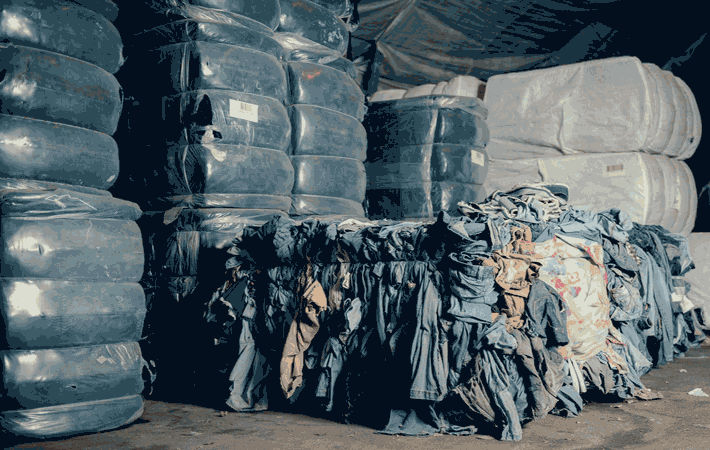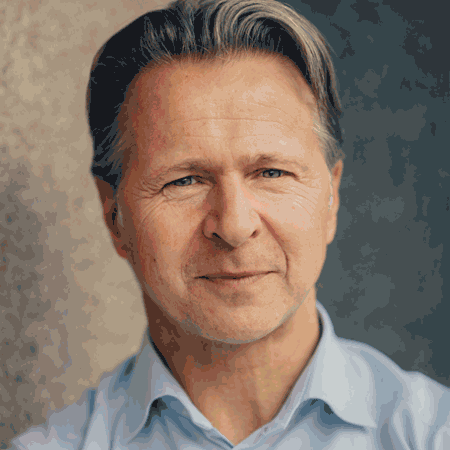To be at 360,000 metric tonnes capacity in 2030: Renewcell
Founded by innovators from Stockholm’s KTH Royal Institute of Technology in 2012, Re:NewCell AB (‘Renewcell’) is a sustaintech company based in Sweden. Through its patented process, Renewcell is able to upcycle cellulosic textile waste, such as cotton clothes, into a new material called Circulose. Recently, ABB–a Swedish-Swiss multinational robotics and automation company has collaborated with Renewcell–-to deliver automation, electrification, quality control systems, motors and drives for the latter’s new industrial textile recycling production line in Sundsvall. In an interview with Fibre2Fashion, Patrik Lundström, Chief Executive Officer, Renewcell, and Björn Jonsson, Hub Manager North Europe, Process Industries, ABB/Head of PA in Sweden, speak about the terms of the agreement between the two companies, how it is going to benefit both and also play an important part in the world fashion industry.
A lot of companies are into textile recycling today. What are the most important parameters which differentiate Renewcell from the others?
Patrik Lundström: Renewcell is built on a breakthrough process that has made it the first company in the world to produce 100 per cent recycled pulp at scale. We receive used garments and textile production waste with high cellulosic content, like cotton. The textiles are shredded, de-buttoned, de-zipped, de-coloured and turned into a slurry. Contaminants and other non-cellulosic content are separated from the slurry, what remains is Circulose branded dissolving pulp made from 100 per cent recycled textiles. The sheets of Circulose are then sent to fibre producers, tapping right into the existing value chain as a replacement for virgin materials like cotton, oil and wood.
The fibres made with Circulose are indistinguishable from traditionally made viscose from wood, the only difference is circularity. This makes it possible for brands to replace virgin fibres with fibres made with Circulose and reduce their environmental impact significantly – without compromising on quality.
You recently had a partnership with ABB. What were the main points based on which this partnership was forged?
Björn Jonsson: Part of the reason that ABB was selected for this project with Renewcell is due to our many decades of working alongside pulp and paper mills on their most critical challenges, including in Sweden. These challenges often require cross-industry perspectives, and this is where ABB excels through domain-specific knowledge. There is a great deal of familiarity with ABB in Sweden and we know the exact processes from the former SCA paper mill, which is now the new home of Renewcell.
We are bringing our expertise across from the pulp and paper industry, and 130 years of history. For example, a specific technology to measure and control a pulp dryer, is now used to measure and control the reprocessed clothing fibres in Renewcell’s project. ABB has the experience in controlling process inputs like material resources and energy in order to meet very precise quality targets which are precisely measured by ABB technology.
ABB has been developing products and services that help papermakers realise higher levels of productivity and profitability for more than 100 years. From power distribution and advanced control systems to state-of-the-art scanning and measuring equipment, ABB brings together deep industry knowledge, world-class solutions and expertise to make plants more efficient.
How is this going to mutually benefit both the companies?
Patrik Lundström: We want to work with the best and most reliable suppliers of equipment and solutions available. ABB has the knowledge, presence and experience we need to keep both budget and schedule. They also have an idea about resource efficiency, circular economy and sustainability that we share.
Björn Jonsson: ABB is the only company that can deliver a complete automation, quality measurement and control, and electrification solution based on its own products and services. This is combined with strong local project and service workforce, competence and experience within pulp and paper industry.
How many years of research is Renewcell’s “Circulose” technology backed up with? How has the demand for Circulose grown through the years since its invention?
Patrik Lundström: The company relies on a unique and patent-protected process technology developed by world-leading cellulose chemistry researchers at KTH the Royal Institute of Technology in Stockholm. They founded the company back in 2012 and for about five years it was a research project to develop the process. In 2017 we started our demonstration plant in Kristinehamn, where we have produced at industrial scale and launched clothes made with Circulose in stores with global brands. This shows proof of concept as we’re taking the next step to commercial scale in Sundsvall beginning in the first half of next year.
Demand for Circulose and recycled fashion have soared. What started as a bold idea in a lab is now on its way to change as a global industry. To be able to recycle clothes at a scale where it really makes a difference--we are now investing and expanding the capacity. At the new plant, hundreds of millions of garments will be saved from landfill and incineration each year. And this is only the beginning.
How many suppliers of post-consumer and post-industrial textile waste fractions are you connected with at present and how much waste is collected through them?
Patrik Lundström: We’re partnering with suppliers of both post-consumer and post-industrial textile waste fractions that meet our basic requirements of 95 per cent or higher cotton content, at least five metric tonnes single shipments and compliant with our Supplier Code of Conduct. We are currently in contact with different suppliers and have signed contracts of around 46,000 tonnes of textile waste a year for the upcoming plant.

How is this contract between the two companies going to play an important part in the world fashion industry?
Patrik Lundström: We’re building the world’s largest textile recycling plant in Sundsvall, offering the fashion industry a circular solution – at scale. Having skilled and experienced suppliers like ABB has been crucial for us in this development.
Apart from ABB, what other tie-ups are on the cards for Renewcell?
Patrik Lundström: We are working very closely with our landlord SCA and our collaboration has been important to enable us to move at this speed. We appreciate their great experience within pulp production and building new plants. It has been a great experience for both parties from the very start.

How much time does it usually take to produce garments with Renewcell’s patented technology?
Patrik Lundström: In our current plant it takes about three hours to go from textile waste to a sheet of Circulose. Our pulp is then sold to fibre producers around the world, spun into yarn and made into fabric. Timewise it depends on the geographical supply chain, but there is no difference from clothes made with virgin materials.
What are some of the challenges you may be facing in driving your business and what are your work around solutions?
Patrik Lundström: Scale and speed. To be able to change fashion we must scale and we must do it as fast as possible. It takes 3-5 years to build a new factory, so we need commitments from brands today on what volumes they need in the long-term future. Then we can get the financing needed from the market and build the capacity to meet this demand. Similar off-take agreements are used within other industries and to really shift future production, the fashion industry must adapt and commit as well.
There is a lot of greenwashing happening in the name of sustainability. What are your views on this topic? How can countries curb this?
Patrik Lundström: Our view is pretty simple--greenwashing is only postponing the problem and counterproductive for the companies actually making a difference – and we don’t have any time left for that.
We are very aware of the many issues within the fashion industry and for us it’s important that we don’t become a way for brands to get rid of their excessive amounts of garments and continue their overproduction. That is why we buy our raw material sorted from collectors, to ensure the waste hierarchy where clothes are used longer, reused and resold before they are recycled with us.
How is ABB trying to consolidate its position in the world textile industry? What new technologies it is coming up with related to the textile machinery?
Björn Jonsson: ABB is committed to helping its customers reduce their emissions and preserve resources. Last year, we released our Sustainability Strategy 2030, which focuses on the areas where the company can make the biggest impact – reducing carbon emissions, preserving resources and promoting social progress.
Recycling is extremely important as part of this. We have set a target that at least 80 per cent of our offerings will have circularity embedded by 2030. Renewcell aligns with our goals and we are excited to be part of it.
Our process knowledge from working across many industries can be combined with our automation and process control solutions, quality control solutions, electrification motors, drives and much more. Diversifying has been part of ABB story for our 130 years history and we will always continue in this way.
What do you do with the final products? Do you retail them yourself or sell it to fashion companies?
Patrik Lundström: We produce a pulp that is sold to viscose mills around the world. Our customers don’t have to change their processes to accommodate Circulose. It’s a ‘drop-in’ product, as it can be seamlessly incorporated to produce viscose fibres. The viscose is spun into yarn and then end-customers can walk into stores and buy recycled clothes with virgin quality. Our technology offers brands a solution to two of the fashion industry’s major challenges: resource use and waste. If one kilogram of clothing is recycled instead of being produced from virgin cotton, oil or wood, it saves thousands of litres of water and decreases land use, waste, plastic pollution and emissions of both CO₂ and chemicals. We help brands deliver on their promises to reduce their negative impact significantly.
Have you quantified how much of energy reduction does your recycling of garments lead to? If yes, what are the metrics used?
Patrik Lundström: We are building an LCA Model for Circulose and will deliver data once the commercial production in Sundsvall is up and running. Using recycled instead of virgin materials and 100 per cent renewable energy means our impact is significantly lower than conventional alternatives. But we won’t stop there, we will keep monitoring our data closely to optimise the process and reduce our impact from our operations and value chain.
The former SCA site offers fantastic conditions for establishing our business quickly and at minimised risk. Not only do we get access to buildings, equipment, infrastructure, clean green energy, excellent water purification and logistics solutions--we can also recruit from a hugely experienced talented pool of operators and engineers who know the place inside and out. It is precisely this knowledge that is invaluable to have access to when establishing a new industry.
What lies ahead of the road for both ABB and Renewcell? What capacity expansion plans do you have?
Patrik Lundström: We will continue to scale up to meet the demand from brands to shift material toward circularity. Our goal is to be at 360,000 metric tonnes capacity in 2030 by continuing this expansion. When we have selected suppliers, we look for strong reputation in pulp and paper and for a supplier that will follow us when we build new plants. It is important we have the local support from ABB and global footprint for when we eventually move out of Sweden. If we can have a company onboard like ABB we can scale faster which is the ultimate goal. (PC)



